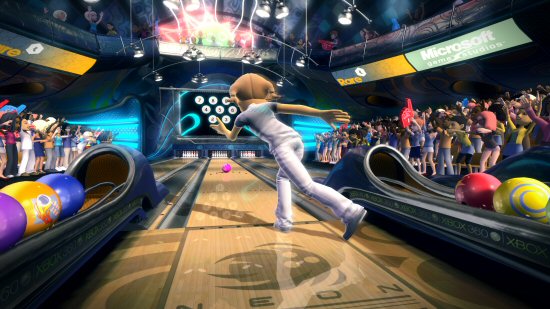First ever sport's title to feature full body motion tracking
Wii Sports was a phenomenal success for Nintendo. The fact that you had to get up off your sofa and physically take part in sports such as boxing and tennis brought families and friends of various age groups together to play games that didn’t require an intricate combination of button presses to master, but relied solely on movement and physical interaction. Anyone can pick up and play Wii Sports, even your granny -- that's what makes it so popular.Nintendo’s competitors would have been crazy not to follow this rising trend in party games that was born from the introduction of Wii, and predictably we’ve now witnessed both Sony and Microsoft release their respective motion-sensing controllers and sport’s titles in 2010. It comes as no surprise then that the premise for Kinect Sports on Xbox 360 is exactly the same as Wii Sports -- why change a formula that sold millions worldwide? Kinect Sports may have higher production values, a licensed soundtrack and be the first ever sport's title to feature full body motion tracking, but it's crystal clear that the blue-print was stolen from Nintendo like a thief in the night.
Nevertheless, Kinect Sports improves on Nintendo's work in the field of motion-sensing with its full-body 3D motion capture experience, and manages to deliver a set of sport's games and challenges that feel far more advanced than those in Wii Sports. With a Wii-mote in your hand, you can cut corners to win. In fact, you don’t actually have to move your body that much. You can often get away with sitting down and waving your arms, or just ensuring that you hold and move the Wii-mote in the right direction. In Wii Sports, as long as you roughly thrust your controller in the right direction, your movements translate fairly accurately on screen. With Kinect, however, it’s much more difficult to master and less forgiving physically. Kinect Sports takes into account not just the movements of your hands, but how high you jump when you leap over a hurdle in a track and field, or how fast you flick your wrist to launch a discus. It's also incredibly accurate, taking into account the subtlest of body movements.

At first, the new level of acute accuracy that you need to apply to succeed feels a little strange, probably more so for anyone who has ever played Wii. Without having something in your hands to grasp and bridge that gap between fantasy and reality, you start off feeling a little detached from the gameplay. However, when you get to grips with its sensitivity and physically exert yourself so hard that it feels like you've just been involved in a tough work-out routine, it really does make the whole Wii Sports experience feel quite dated.
Continued overleaf...









